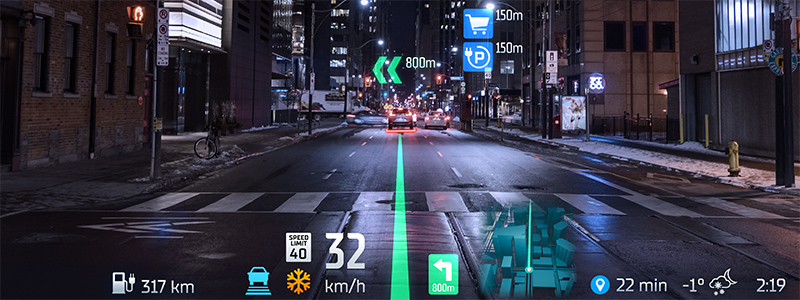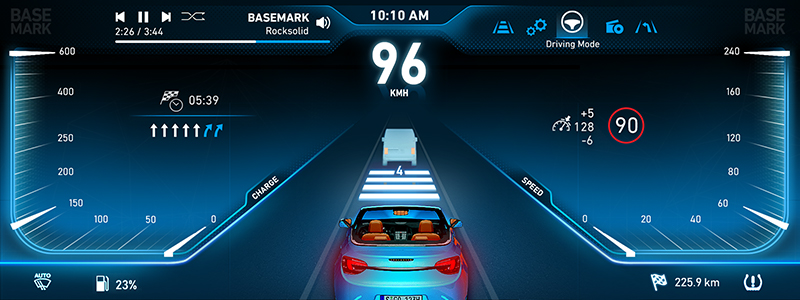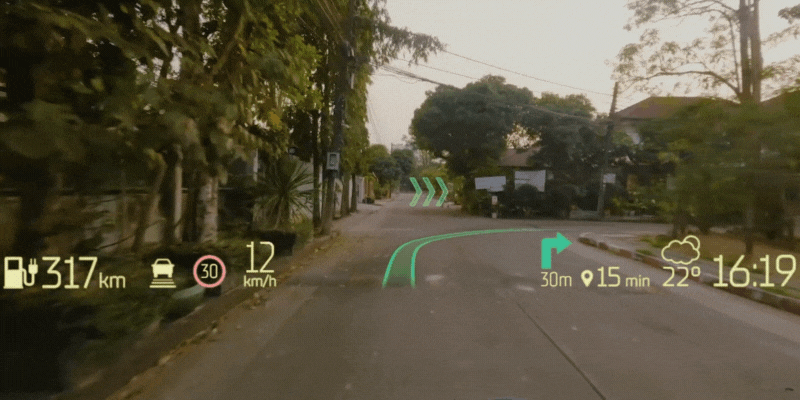
Over the past few years, Advanced Driver Assistance Systems (ADAS) have completely transformed and revolutionized the automotive industry, making driving safer and more convenient than ever before. However, drivers’ frequent reluctance to trust computer-provided data limits the potential effectiveness and wider adoption of ADAS technology. According to the annual automated vehicle survey by AAA, 68 percent of the consumers surveyed said that they were afraid of self-driving vehicles – where the ADAS functionality plays a key role. The 68 percent is an increase of 13 percentage points from last year’s survey. The Road safety Thematic Report: ADAS by the European Commission lists critical challenges with ADAS, such as:
- Lack of system transparency
- Inappropriate trust in the system
- Mode confusion (are ADAS features activated or deactivated)
- Keeping the driver in the loop (the need for monitoring, although driver workload is reduced)
The answer to addressing these challenges lies in Augmented Reality (AR) technology. By visualizing ADAS information through AR, trust and transparency between the driver and the vehicle can improve, ultimately leading to increased safety on the roads. Major automotive outlets are taking this evolution very seriously. Varsity UK has recently published an article highlighting upcoming trends in the sector , with AR as its main point of focus.
In this article, we will explore how the use of AR can drastically improve safe driving, and in what driving situations AR graphics can be considered a game-changer.
Advanced Driver Assistance Systems and Augmented Reality: What Are We Talking About?
Advanced Driver Assistance Systems (ADAS)
Advanced Driver Assistance Systems are electronic systems designed to assist drivers in operating their vehicles more safely and efficiently. ADAS can potentially include a wide range of features, such as lane departure warning, adaptive cruise control, automatic emergency braking, blind spot detection, and parking assistance.
These systems use sensors, cameras, and other types of technology to detect potential hazards and provide drivers with assistance to help them avoid accidents. ADAS can improve driving safety, reduce the risk of collisions, and make driving more comfortable and convenient. Many new vehicles come equipped with ADAS as standard features, while others may offer them as optional extras. As technology continues to evolve, ADAS is likely to become more sophisticated and capable of performing even more complex driving tasks.
Example of an instrument cluster with 3D ADAS alerts
Augmented Reality
Augmented Reality is a technology that combines real-world data with computer-generated data to provide users with an enhanced view of their environment through a graphical overlay. In the context of driving, it can be used to display situational information, such as lane projections, object identification/alerts, collision warnings, and navigation cues. Making it easier for the driver to maneuver the vehicle in a way that is not just safer for the driver, but also for the other co-drivers on the road.
Automotive AR graphics are commonly displayed on a variety of in-vehicle screens, such as the infotainment display, instrument cluster, e-mirrors, and AR Heads-up display (HUD). You can also check out this article to learn more about potential use cases for automotive AR.
Example of AR graphics overlaid on a HUD from Basemark
Can Augmented Reality Considerably Improve Safer Driving Habits?
How can AR actually improve the way drivers operate their vehicles on our roads?
AR for driving is not just a fun and cool way to provide a different driving experience, but rather a crucial technology that is being used actively to improve road safety. Gregory Thomas, the director of the Center for Design Research at the University of Kansas, who studies AR in cars, said about key players in the industry that “Using a lot of the same technology, they’ve adapted it to be more driver helpful.”
Currently, ADAS alerts are mainly conveyed through audio warnings, flashing symbols, or vibrations in the steering wheel or seat. However, with AR, these alerts can also be visually displayed on the windshield or instrument cluster. The use of alerts that stimulate different human senses are likely to enhance driving safety and prevent accidents resulting from human error. This promising technology is, in fact, a more intuitive and natural way for drivers to interact with their vehicle’s ADAS functions. By enhancing the surroundings with AR, the driver will have an extra pair of eyes surveilling the driving situation and reduce the driver’s cognitive load on the brain, resulting in improved reaction times and prevention of accidents.
For example, with AR you can project and highlight the distance between the driver’s vehicle and the car in front of them or alert the driver of a potential collision. This type of visual feedback can help drivers react faster and make better decisions on the road. By displaying critical information in the driver’s field of view, AR can reduce the need for drivers to look away from the road. This is especially important for complex ADAS functions that require drivers to monitor multiple systems simultaneously, such as adaptive cruise control or lane departure warning.
AR Solutions Can Easily Be Applied to Daily Driving Situations
AR graphics can be helpful in a wide range of driving situations. For example, in heavy traffic, AR can highlight the distance between the driver’s vehicle and the car in front of them, helping to prevent rear-end collisions. AR can also alert drivers to potential hazards, such as pedestrians or cyclists, that may be difficult to see in low light conditions.
AR graphics can also be useful in navigating complex road networks, such as roundabouts or intersections. By overlaying directional arrows or other navigational aids onto the driver’s view of the road, AR can help drivers navigate these situations with greater ease and confidence.
What ADAS Functions Could Be Useful to Visualize through AR?
The ADAS market is currently valued at over 33 billion dollars in the US alone, and is projected to reach over 100 billion dollars by 2029. Many ADAS functions can be visualized using AR. In some driving situations, graphics displayed using AR technologies can be a real game changer for driver safety.
Adaptive Cruise Control
Adaptive Cruise Control is an advanced driver assistance system that uses sensors to maintain a safe distance between the driver’s vehicle and the vehicle in front of it. It is typically integrated into a vehicle’s onboard computer system and can be activated with the push of a button.
This technology, combined with the use of AR, could enhance the driver’s experience and safety. For example, this can be achieved by integrating Adaptive Cruise Control with AR-powered HUDs that project the speed and distance of the vehicle ahead directly onto the driver’s windshield. With this system, the driver would be able to see the distance between their vehicle and the vehicle in front of them without having to take their eyes off the road.
Lane Departure Warning
Lane Departure Warning can also be integrated with AR technology. This feature is an ADAS that uses cameras to detect when a vehicle is drifting out of its lane and alerts the driver with an audible or visual warning.
This can help to reduce driver distraction and improve situational awareness by providing a warning in the driver’s line of sight. With this system, you can see the warning without having to look away from the road, which can be particularly useful in situations where the driver is experiencing fatigue or distraction.
Video AR enhanced driver assist example by Basemark.
The Future of AR in Automotive is Bright
Augmented Reality is a promising technology already being put to good use to try and revolutionize the way drivers interact with their vehicles’ ADAS features. Basemarks’ automotive AR solution, Rocksolid AR, makes it possible for automotive OEMs to develop and deploy automotive AR applications in an easy and efficient manner.
By overlaying relevant information directly onto the driver’s view of the road, AR can help drivers make better decisions and react faster to potential hazards. In addition, by reducing the need for drivers to look away from the road or take their hands off the steering wheel, AR can help reduce driver distraction. As car manufacturers and major suppliers are currently on the hunt for innovative and safe ways to improve driver safety, AR technology will definitely be playing an important role in the automotive revolution within the coming decades.



